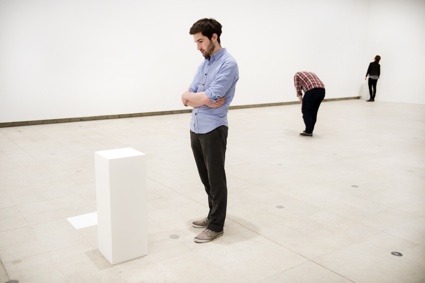 Tom Friedman, Untitled (A Curse), 1992. Photo Linda Nylind
Tom Friedman, Untitled (A Curse), 1992. Photo Linda Nylind
An empty plinth cursed by a professional witch, eavesdropping devices you can’t detect no matter how much you look, a Playboy centrefold erased over the course of one week till no trace of the glamour girl is left, evidence of a movie that was shot without film in the camera, a canvas of invisible ink, a diary written using water. Invisible: Art about the Unseen 1957 – 2012 deals almost exclusively with immateriality and emptiness. Yet, it is one of the most turbulent, humorous and captivating exhibition i’ve seen this year.
Invisible is historical, yet contemporary. It seems to be acutely conscious of its apparent absurdity and more importantly, it leaves so much up to the visitor’s imagination.
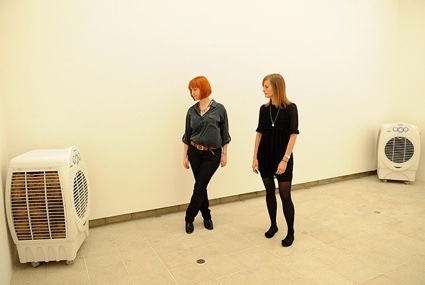 Teresa Margolles, Aire/Air, 2003. Photograph: Tony Kyriacou/Rex Features
Teresa Margolles, Aire/Air, 2003. Photograph: Tony Kyriacou/Rex Features
I remember the first time i ‘saw’ an invisible artwork. I also remember the impact it left on my mind. In 2008, in entered a room at Strozzina in Florence. It looked empty, apart from a text on the wall that explains that the air-conditioning unit in the room is using the water employed in public mortuaries in Mexico City (where the artist Teresa Margolles works also as a forensic technician) to wash the corpses of as yet unidentified murder victims prior to autopsy. The installation moved me more than many of the photo series i’ve seen that document crimes committed by drug cartels.
Margolles’ installation Air/Aire is part of the Invisible exhibition. I didn’t enter the room this time.
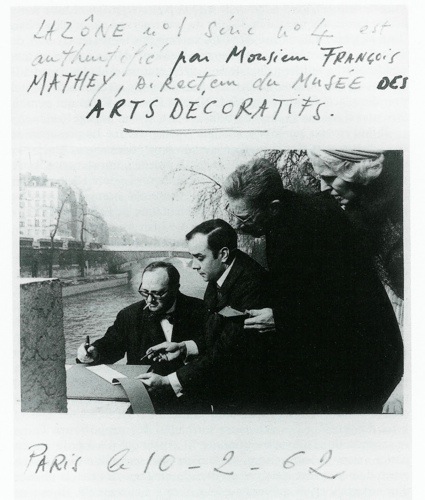 Yves Klein, Zone de Sensibilité Picturale Immatérielle, 1959 (image)
Yves Klein, Zone de Sensibilité Picturale Immatérielle, 1959 (image)
Zone de Sensibilité Picturale Immatérielle, by Yves Klein –who in 1958 staged the first exhibition completely devoid of visible content, is one of the most striking pieces in the first exhibition room. In 1959, the French artist started selling ownership of empty space in exchange of shreds of gold leaf. If the buyer wished to go further, the piece could be completed in a ritual in which the buyer would burn the cheque, and Klein would throw half of the gold into the Seine. The performance would be performed in the presence of an art critic, dealer, or art museum director and at least two witnesses.
Believe it or not, Klein sold eight Zones, of which at least 3 involved the complete ritual.
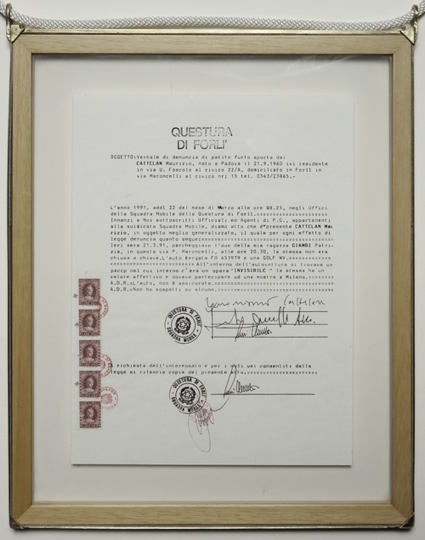 Maurizio Cattelan, Untitled (Denuncia), 1991. Police report of stolen invisible artwork. © the artist 2012. Image courtesy Marian Goodman Gallery
Maurizio Cattelan, Untitled (Denuncia), 1991. Police report of stolen invisible artwork. © the artist 2012. Image courtesy Marian Goodman Gallery
One of the most visible works in the show is an official police report that Maurizio Cattelan did in Forlì to denounce the theft of an invisible art work from his car.
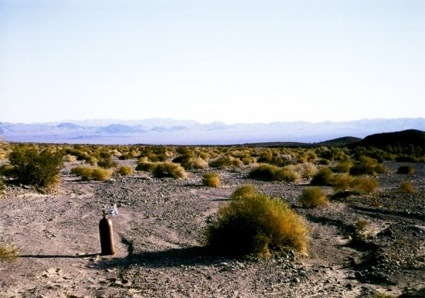 Robert Barry, Inert Gas Series, 1969
Robert Barry, Inert Gas Series, 1969
Robert Barry has some of the deepest and enduringly relevant works in the show. In 1968 already, he was highlighting the presence of Electromagnetic Energy Field that fills the space around us with an impalpable but nevertheless real strength. A year later, Barry released a litre of krypton into the atmosphere of Beverly Hills. Over the following days, he released xenon in the mountains, argon on the beach and helium in the Mojave Desert (Inert Gas Series, 1969).
Photos are the only traces of these ephemeral gestures.
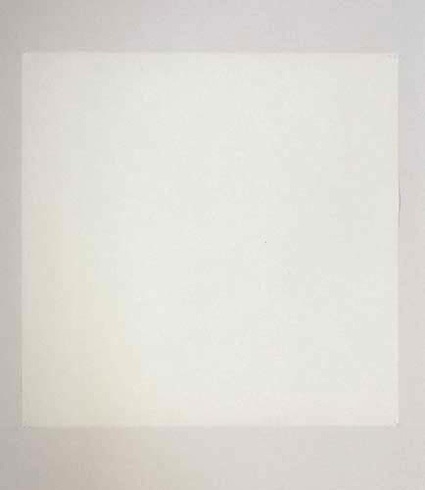 Tom Friedman, 1,000 Hours of Staring, 1992-97
Tom Friedman, 1,000 Hours of Staring, 1992-97
The title of the work above is pretty self-explanatory, Friedman spent a total of 1,000 hours gazing at a white piece of paper.
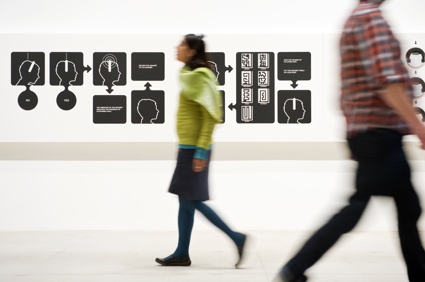 Jeppe Hein, Invisible Labyrinth, 2005. Photo Linda Nylind
Jeppe Hein, Invisible Labyrinth, 2005. Photo Linda Nylind
The work that closes the show is the extraordinary Invisible Labyrinth, a maze that visitors have to master by wearing helmets that trigger slight electrical pulses whenever they bump an invisible wall. The paths of the labyrinths change each day of the week.
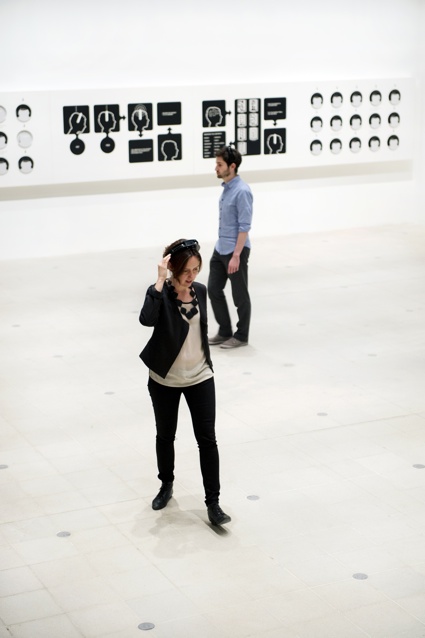 Jeppe Hein, Invisible Labyrinth, 2005. Photo Linda Nylind
Jeppe Hein, Invisible Labyrinth, 2005. Photo Linda Nylind
And then of course there are the works that you not only didn’t see but didn’t even realize were there. Bethan Huws has hired professional actors who pretend to be visitors, they act like everyone else around you and their only purpose is probably to make you look at other visitors with an inquisitive eye.
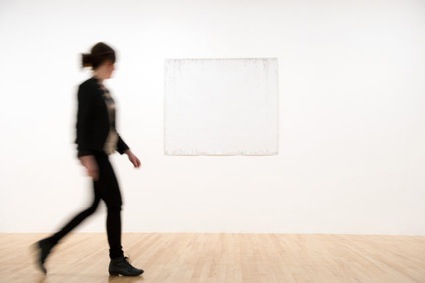 Bruno Jakob, Breath, floating in color as well as black and white (Venice), 2011 Photo: Linda Nylind
Bruno Jakob, Breath, floating in color as well as black and white (Venice), 2011 Photo: Linda Nylind
Invisible: Art about the Unseen 1957 – 2012 remains open until 5 August 2012 at the Hayward Gallery in London.
